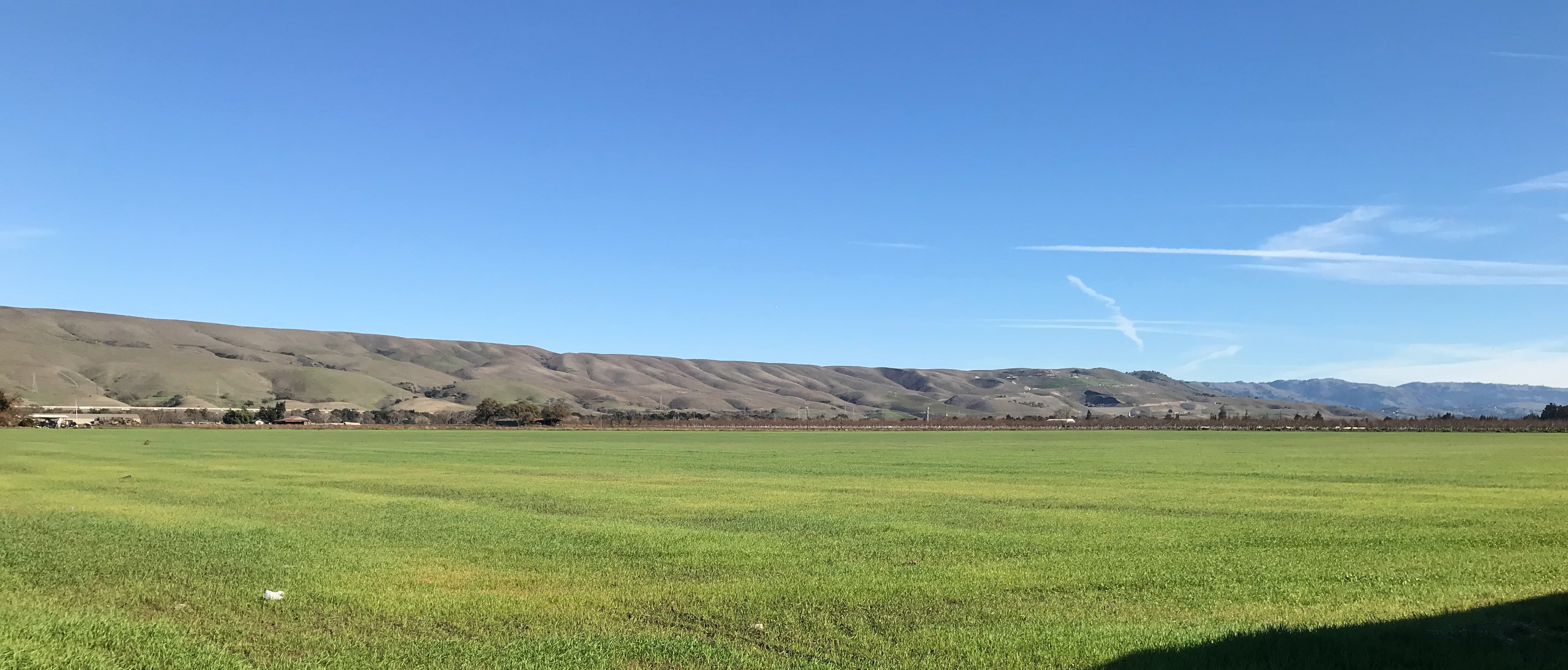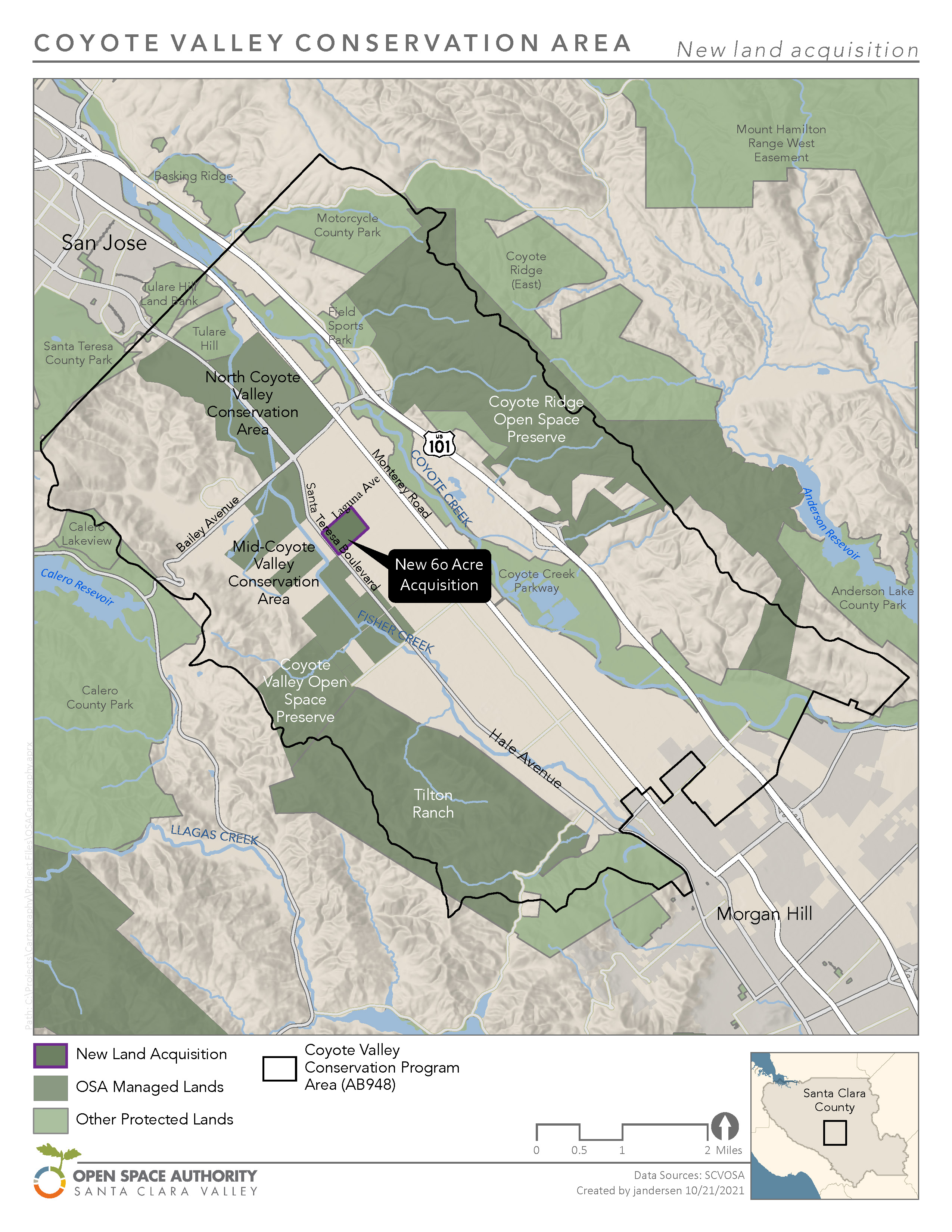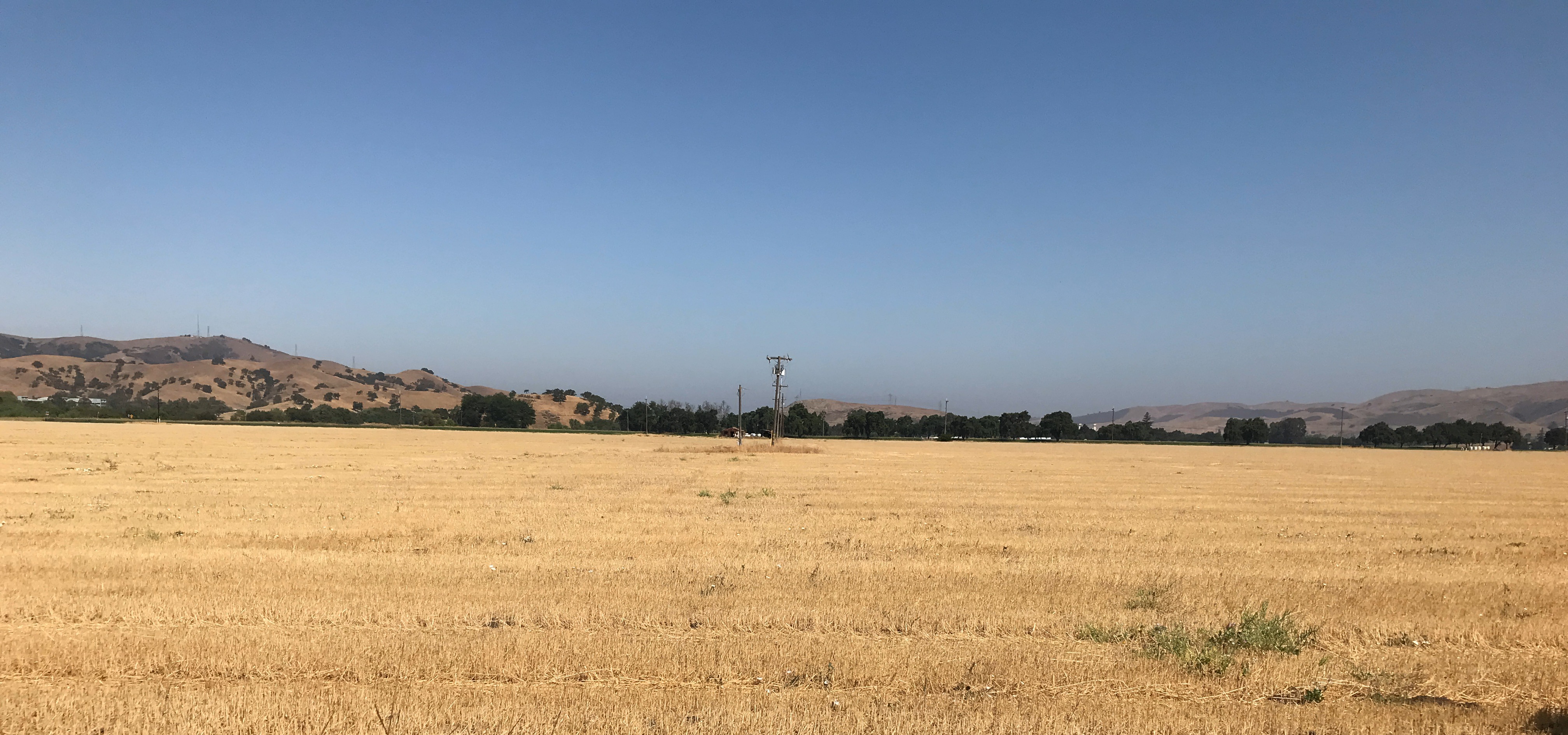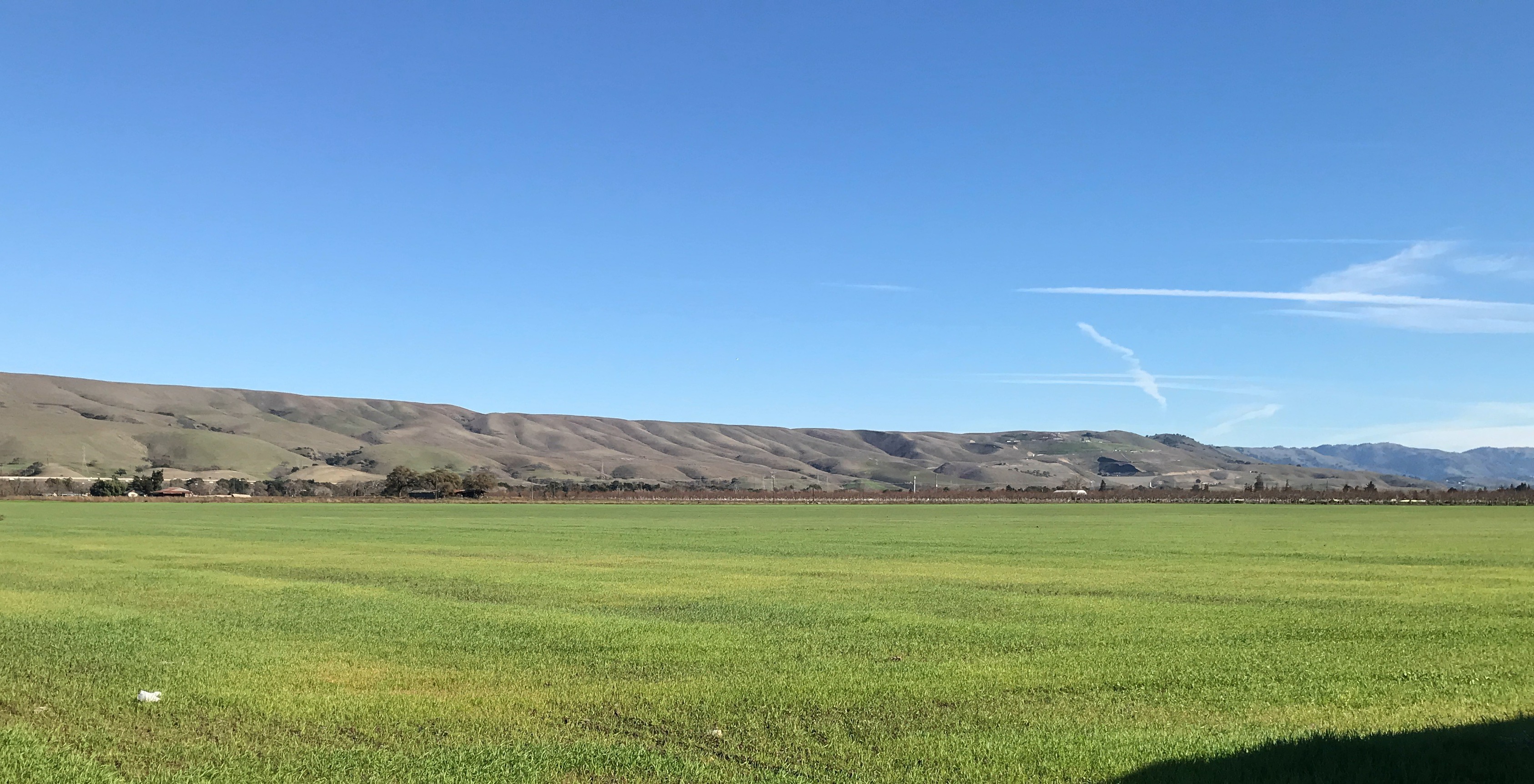Open Space Authority Protects 60 Acres for Sustainable Agriculture
Sixty acres of prime farmland are now protected at Laguna Avenue and Santa Teresa Boulevard in the middle of Coyote Valley - also known as Mid Coyote Valley. With this latest addition to Coyote Valley’s growing network of protected lands, the Santa Clara Valley Open Space Authority (the Authority) is working to establish sustainable, local climate-smart agricultural practices within the Coyote Valley Conservation Program Area.
The Authority purchased the newly-acquired farmlands from WP Investments, LLC, in partnership with the State of California Department of Conservation through the Sustainable Agricultural Lands Conservation program (SALC), Santa Clara Valley Transportation Authority (VTA), and the Santa Clara County Planning Department.
“The protection of Mid Coyote Valley farmland supports the long-term economic and environmental viability of local agriculture,” said Andrea Mackenzie, General Manager of the Authority. Working with public and private partners, the Authority protects natural and working lands through conservation easements and purchases with willing sellers.

“Preserving this land in Coyote Valley contributes to ecological, economic, and quality of life benefits and serves as an appropriate natural infrastructure complement to our work to upgrade the region’s transportation infrastructure,” said Ann Calnan, Environmental Programs Manager for VTA. VTA provided 2016 Measure B funds through the US 101/SR 25 Interchange Project to help preserve these farmlands in Santa Clara County.
State Investments in the Santa Clara Valley Agricultural Plan:
Purchasing and protecting working farms and ranches also demonstrates how the Authority is working with Santa Clara County to implement the comprehensive Santa Clara Valley Agricultural Plan and help combat climate change. “The Agricultural Plan is a roadmap to protecting the multiple benefits that our region’s remaining farmlands and working lands provide,” said Mackenzie. The Agricultural Plan was developed with SALC funds totaling $200,000 from the state’s Strategic Growth Council and Department of Conservation to strategically protect agricultural lands as a climate resilience tool.
“The SALC program is aimed at protecting farmlands to reduce greenhouse gases, which in turn helps us maintain a myriad of important economic and ecosystem services,” said David Shabazian, Department Director of the California Department of Conservation. “As we preserve these working lands, we’re also directing new growth and housing into existing urban areas, which helps reduce greenhouse gas emissions from those commuting to and from outlying areas.”

Mid Coyote Valley Modeling the Future of Sustainable Agriculture:
With this latest addition to Coyote Valley’s growing network of protected lands, the Authority is working to establish areas within the Mid Coyote Valley as a model for sustainable agriculture and promote awareness of the economic and environmental value of working lands.
Formerly the largest fruit producing region in the world, Santa Clara Valley's rich agricultural heritage once included the production of cherries, apricots, and prunes that were shipped all over the country - meeting about a third of the nation's agricultural demands. But since the 1950s, the conversion of farmlands to urban development has claimed many of the Valley's orchards and fields.
A study from U.C. Davis reports that in Santa Clara Valley, one-acre of farmland produces 77 times fewer greenhouse gases (on average) than developed lands. Yet in the last 40 years, 45% of Santa Clara County’s prime farmlands have converted to urban sprawl. To slow this trend, the Authority is working with local, regional, and state policymakers and programs to develop a growing body of research about the benefits and ecosystem services these natural and working lands provide.
Coyote Valley offers unparalleled opportunities to create a 21st century greenbelt near urban San José. To achieve this, the Authority is working with natural resource agencies to engage in local, regional, and state-wide land use planning and policy initiatives.
“This acquisition is a win-win for our community – preserving farmland and securing open space,” said Mike Wasserman, President of the Santa Clara County Board of Supervisors. “I applaud the work of the Santa Clara Valley Open Space Authority and their collaborative approach to protecting the natural and working lands of Coyote Valley.”

Building Towards Climate Resilience:
Through this acquisition, the Authority also aims to connect people to the importance of food security and the many environmental benefits local farmers and farmlands provide.
The Silicon Valley has just a fraction of its former agricultural lands left, but the vibrant remaining agricultural industry still contributes 1.6 billion to the local economy each year. Local growers and ranchers continue producing fruits, vegetables, livestock products, as well as nursery crops, wine grapes, seed crops, forage crops, and timber. The natural and working lands of Coyote Valley also sit atop the Coyote Basin, part of the drinking water supply aquifer for 1.6 million people in the area.
“Protecting the natural and working lands in and around Coyote Valley provides critical climate resilience for Santa Clara Valley residents,” said County Supervisor Cindy Chavez. “The COVID-19 pandemic brought to light the growing needs for food security in our region and beyond. Protecting agricultural lands and open spaces as outlined in the Santa Clara County Agricultural Plan safeguards clean air, water, and local food sources for millions of residents.”
The Authority plans to manage and assess the property’s condition over the next year, collaborate with farm advisors and seek a tenant for agricultural operations that will further Coyote Valley conservation goals.

